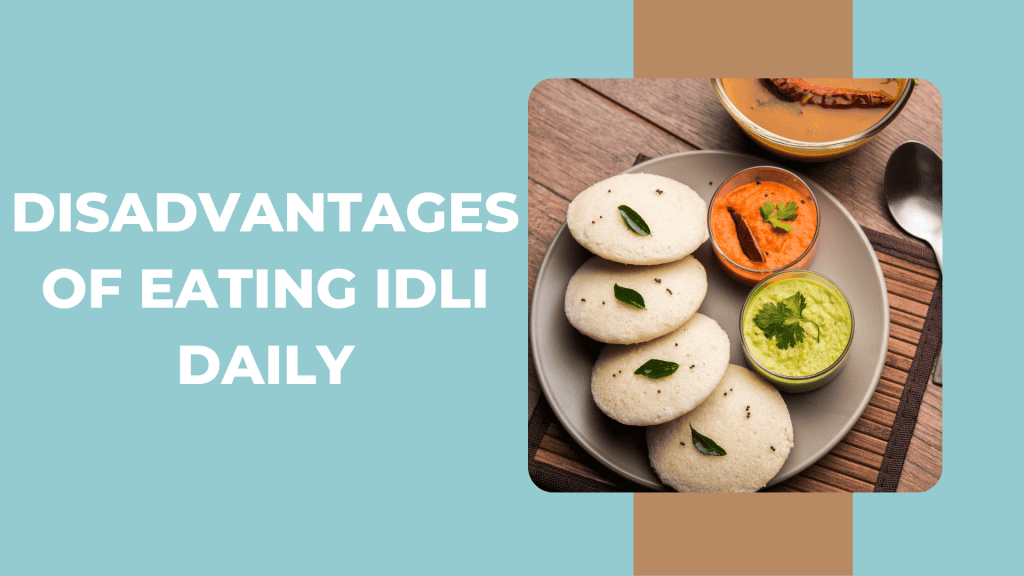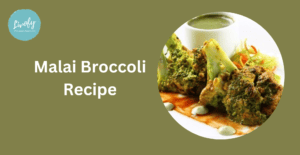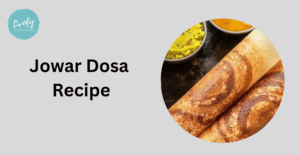Despite being low in calories and generally considered a healthy meal, there are certain disadvantages of eating idli daily. The dish of idli is prepared through fermentation of rice and lentils and although it can be delightful and even nutritious, it may lead to certain digestive issues when consumed in excess. Some of these problems include heartburn, burping, bloating, and cramps. The food is also considerably high in carb content and has a high glycemic index which can give cause to blood sugar spikes and contribute towards diabetes as well as lead to weight gain. Continue reading to know more on the side effects of idli.
Are there disadvantages of eating Idli Daily?
Yes, there are certain disadvantages of eating idli daily despite being hailed as a healthy breakfast. These drawbacks include its excess carb content which can lead to weight gain and high glycemic index which gives way to frequent blood sugar spikes. The fermentation process of idli can also increase the levels of phytic acid which is known to compromise nutrient bioavailability. Another side effects of idli is served with high sodium content in the bowls of sambar and chutneys, which can give way to increased blood pressure. This in turn can lead to hypertension and risk of heart diseases. And while idli is a protein rich foods and can provide dietary fiber, it lacks several essential minerals and vitamins which our body requires to perform crucial functions.
Reasons behind disadvantages of eating Idli Daily
The South Indian delight of idli and sambhar along with its exquisite chutneys is deemed as one of the breakfast options and a healthy one at that given its protein and fiber content. However, there are several drawbacks associated with excessive intake of idli especially for the digestive health and people with diabetes. Below mentioned are some of the reasons behind the disadvantages of eating idli daily.
- High Glycemic Index
- Calorie Content
- Sodium Content
- Fermentation Concerns
- Nutrient Imbalance
- Potential Allergens
- Monotony in Diet
1. High Glycemic Index
Idlis are made up of rice and urad dal which are high in carb content and also have low GI. Overconsumption of idli can cause blood sugar spikes which increases the risk of diabetes and can also be bad for heart health. With frequent sugar crashes comes increased hunger pangs which lead to overeating. The increased calorie consumption can give way to weight gain. Constantly high blood sugar levels also cause insulin resistance as well as metabolic syndrome.
2. Calorie Content
A single contains about 40 to 50 calories which might not be a lot, however when consumed in excess it can increase the overall calorie consumption. Consuming more calories than the body burns can lead to weight gain. Over time, this can result in obesity, which is a risk factor for numerous health conditions including heart disease, diabetes, and joint problems. Include more Zero calorie foods into your idli recipe.
3. Sodium Content
Another disadvantages of eating idli is the high sodium content present in the side dish that accompanies it. Although idli on its own isn’t high in sodium however, sambhar and the chutneys served along with it can increase the overall sodium intake. As a result, one’s blood pressure can increase which can lead to hypertension and if it becomes chronic, it can further increase risk of heart diseases and stroke.
4. Fermentation Concerns
The process of fermentation in idli usually makes them easier to digest, however it may give rise to certain digestive problems in some when over consumed such as bloating or gas. It can also increase the levels of phytic acid. Phytates can decrease the absorption of minerals like zinc, iron, magnesium or calcium. Thus increased levels of phytic acid can cause deficiencies of certain minerals in the body.
5. Nutrient Imbalance
The disadvantages of eating idli daily also include the acute imbalance of nutritional composition in your diet. Although rich in protein and dietary fiber, idli can’t provide all the nutrients that your body needs to perform several functions. Idli should be a part of your overall balanced and healthy diet so as to provide your body with all the necessary nutrients.
6. Potential Allergens
Idli is made up of rice and urad dal which can trigger problems for individuals dealing with allergies. It is especially bad for people with weak digestive systems and its symptoms can include abdominal pain, diarrhoea, nausea, vomiting, stomach cramps. It is preferable for those individuals to consume idli at a minimal amount and consult a healthcare expert before introducing it into their diet.
7. Monotony in Diet
Monotony in diet might not fall amongst your list of disadvantages of eating idli daily, however it can make your diet bland and boring in the long run. Moreover, relying too much on idli can give way to nutritional deficiencies such as that of vitamins A, C, D, B12, iron, and calcium which can ultimately hamper one’s overall health.
What happens if we eat idli daily
Idli is rich in fiber and protein which makes it a good incorporation into one’s overall diet as it is also light on the stomach. As idli doesn’t contain lipids, saturated fats, or cholesterol, it is very low on the calorie count. In fact, it only has 39 calories in each piece, against the recommended 2,000 calories per day. Idli is thus among the healthiest foods for your diet plan. However, overconsumption of anything can be harmful and may lead to deficiency of nutrients and also cause health concerns. Some of the disadvantages of eating idli may include digestive problems such as bloating or constipation, rise in blood sugar levels as well as bad heart health. So, while consuming idli as part of your healthy breakfast or any other meal may be deemed fruitful, it is important to monitor its portion so as not to exceed its intake.
Meanwhile you may also want to have a look at How to lose weight in 30 days.
Tips to make consumption of Idli Daily healthy
Below mentioned are some of the tips that can help in avoiding the side effects of idli and make it more health-friendly.
1. Use rava instead of rice
Rava is a healthier alternative to rice as it will keep the sugar spike in check and help with diabetes. It will also reduce risk of iron deficiency and lower cholesterol levels preventing hypertension or risk of heart diseases.
2. Portion control
Idli should be a part of a healthy and balanced diet instead of being consumed in excess. To extract the best benefits of idli without raising health concerns, it is essential to manage its portion. Consume only 3 or 4 idlis and use smaller plates and bowls to avoid over intake of sambar or chutney.
3. Include more veggies
Add healthy vegetables and protein rich foods to the sambar such as carrot, green beans or spinach to enhance the nutrition of the overall meal. One can also opt for masala idli with spices, veggies or onions which will enrich the taste and nutritional value.
Who should not eat Idli Daily?
People with diabetes should restrict or moderate their intake of idli due to its high carbohydrate content, which can affect blood sugar levels. Individuals with certain allergies or health issues like celiac disease or gluten-intolerance should also not eat idli daily. If they choose to consume, it should be prepared with ingredients that are gluten free. Moreover, idli contains yoghurt which may not suit people with lactose intolerance.
You may also want to find out the answer to, Is Idli Daily good for weight loss?
Healthy Idli Recipes to eat?
The rice and urad dal in idli can raise concerns with digestion and blood sugar spikes which can lead to diabetes and heart issues. However, a better alternative is to twist the ingredients of traditional idli and swap it with healthier options, such as vegetable idli, corn idli, rava idli or other low calorie foods option. Below mentioned are some of the healthy idli recipes to eat.
1. Vegetable idli
Ingredients
- Mustard Oil- 1 tsp
- Green chillies- 1 tsp
- Ripe Tomato- 0.5 tbsp
- Onion- 0.5 tbsp
- Bengal Gram (Chana Dal)- 1 tbsp
- Salt- 0.5 tsp
- White Rice- 2 tbsp
- Capsicum green- 0.5 tbsp
- Carrot Red- 0.5 tbsp
- Sweet corn- 1 tbsp
How to make
- Soak & blend rice, urad dal & ferment overnight
- In a bowl add boiled sweet corn, chopped tomato, chopped onion, chopped capsicum, chopped carrot and water
- Grease tray with oil and pour batter into tray
- Put tray in idli stand, cover & cook
- Serve hot
2. Oats idli
Instructions
- Curd- 1 tbsp
- Olive Oil- 1 tsp
- Chana Dal- 0.25 tsp
- Urad Dal- 0.25 tsp
- Wheat Semolina- 0.5 tsp
- Carrot red- 2 tsp
- Cashew Nuts- 2 gm
- Oats Flour- 1 tbsp
How to make
- Firstly, in a kadai heat oil and splutter mustard, urad dal, chana dal, cumin and few curry leaves.
- Also, add ginger paste and chilli. saute slightly.
- Further, add carrot and turmeric and saute for 2 minutes.
- Now add rava and roast on low flame until it turns aromatic.
- Add powdered oats and mix well.
- Transfer the mixture and allow to cool completely.
- Add in curd and water.
- Mix well making sure there are no lumps.
- Further add coriander, salt and water.
- Mix well making sure to form an idli batter consistency.
- Rest for 20 minutes or until the rava absorbs water.
- Just before steaming add eno (fruit salt) and mix well.
- Steam the oats idli for 15 minutes on medium flame.
- Finally, serve instant oats idli
3. Rava idli
Instructions
- Curd- 80 g
- Mustard Seeds- 0.5 tsp
- Olive Oil- 10 ml
- Fruit Salt- 2 g
- Besan- 30 g
- Wheat Semolina- 2 tbsp
- Carrot Red- 50 g
- Cashew Nuts- 5 g
- Asafoetida- 2 g
How to make
- Firstly, in a kadai heat oil and split mustard, jeera, sooji ,besan, hing and few curry leaves.
- Now add chilli, ginger and saute for a minute.
- Further add carrot, turmeric and saute for 2 minutes.
- Keeping the flame on low add rava and roast well.
- Roast for 5 minutes or until the rava turns aromatic.
- Cool the rava completely and transfer to a bowl. Furthermore, add curd, coriander and salt. Mix well forming a thick batter.
- Now add water and mix well forming a smooth batter.• Rest for 15 minutes or until the rava absorbs water.
- Mix well and add water as required, to form an idli batter consistency batter.
- Grease the idli plate with oil and place cashews in the centre.
- Just before steaming add eno (fruit salt) and mix well till it turns frothy. alternatively, add baking soda.
- PourThe batter immediately into the idli plate. do not rest the batter.
- Steam the rava idli for 13 minutes on medium flame.
- Finally, serve instant rava idli
4. Ragi idli
Instructions
- Curd- 50 g
- Baking Soda- 0.5 tsp
- Ragi- 20 g
- Wheat Semolina- 30 g
How to make
- Firstly, dry roast the rava on medium flame for 2-3 minutes. further, cool them completely before preparing idli.
- Transfer the dry roasted rava to a large mixing bowl. also add ragi flour to it. furthermore add salt and curd.
- Add water as required depending on curd thickness. give a good mix and allow to soak for 30 minutes.
- After 30 minutes, mix well and add water if required. get to idli batter consistency.
- Just before steaming add a baking soda and mix well till it turns frothy.
- Brush the plates with oil and pour the batter immediately into the idli plate. do not rest the batter.
- Also as other idlis you have to steam it for 8-10 mins on medium flame.
- Furthermore, allow it to rest for 5 mins then unmould.
- Finally, serve.
Side effects of eating Idli Daily
Below mentioned are some of the major side effects of idli.
1. Acidity
Fermented foods are generally healthy as they are easier to digest and also have cooling properties. However, excess intake of such foods can give rise to acidity causing heartburn, burps, bloating and cramps.
2. High blood sugar
Another one of the side effects of idli is because of the ingredient used to prepare them which is rice. Idlis are typically made of white rice which has a high glycemic index that can raise blood sugar higher, faster and for a longer time. This leads to blood sugar spikes and can severe the symptoms of diabetes. It can also promote hunger pangs leading to overeating that will result into weight gain.
3. Allergies
The rice and urad dal used in the making of idlis may trigger allergies in some people if consumed in excess. It can have a negative impact on digestive health causing abdominal pain, nausea, constipation or bloating.
Expert Review on Disadvantages of eating Idli Daily
Dr. Beena Kumar is a nutritionist and they share their expertise on the importance of moderating the consumption of idli, otherwise it can give rise to several health concerns. The various disadvantages of eating idli daily includes bad digestive health leading to constipation or bloating, increased risk of diabetes and heart diseases due to frequent blood sugar spikes. High blood sugar levels also give way to hunger pangs which can increase overeating causing weight gain. Excess intake of idli is especially bad for people dealing with celiac diseases or have intolerance to gluten or lactose. For them, it is advisable to limit the intake of idli or use better alternatives such as rava idli or oats idli. One can increase the overall nutrition of the meal by adding more vegetables to the recipe. Moreover, monitoring portion control is extremely important and idli should only be a part of an overall healthy and balanced diet.
References
n.d. A study on formulation, evaluation and analysis of soya-idli. Accessed June 22, 2024. http://www.ijcrar.com/vol-3-4/Hotkar%20Dhanashree,%20et%20al.pdf.
Krishnamoorthy, Srinivasan. n.d. “(PDF) Traditional Indian breakfast (Idli and Dosa) with enhanced nutritional content using millets.” ResearchGate. Accessed June 22, 2024. https://www.researchgate.net/publication/263605222_Traditional_Indian_breakfast_Idli_and_Dosa_with_enhanced_nutritional_content_using_millets.
“Preparation of idli batter, its properties and nutritional improvement during fermentation.” n.d. NCBI. Accessed June 22, 2024. https://www.ncbi.nlm.nih.gov/pmc/articles/PMC3551127/.
FAQs
1. Can we eat idli 3 times a day?
Although idli is a light and nutritious meal, it should not be consumed as many as 3 times a day. The total number of calories consumed from idli should not be more than 100 kcal and it should ideally be intaken during breakfast.
2. Is idli heavy to digest?
When prepared through steaming, idli is low in fat and rich in fiber making it far more easy to digest.
3. Does idli cause gas?
Fermented foods like idli are easy to digest, however over consumption can lead to discomfort in digestion causing bloating or constipation. People with allergic reaction may also suffer symptoms of abdominal pain, vomiting, bloating or constipation.
4. How long does it take to digest idli?
It can take around 6 to 8 hours for idli to reach the large intestine and a day more to break it down further.









